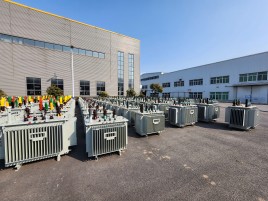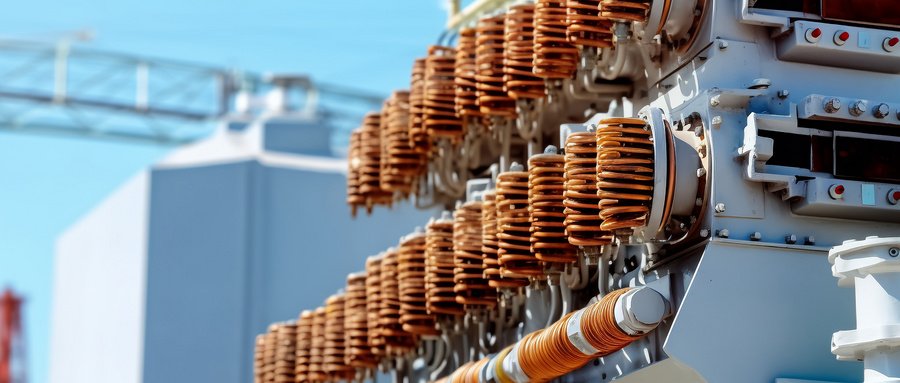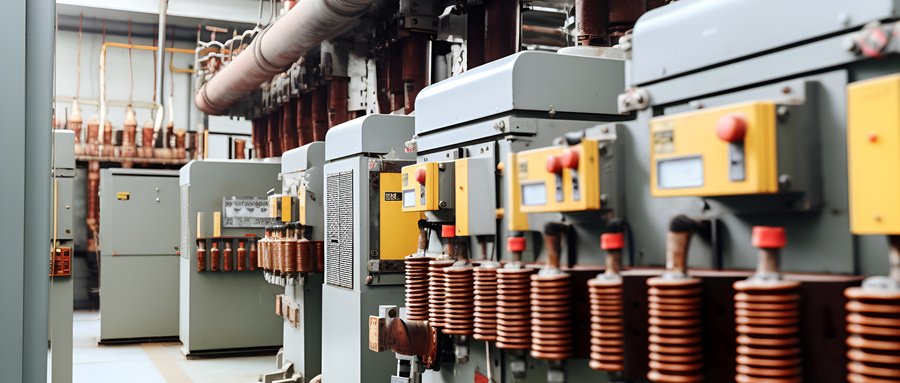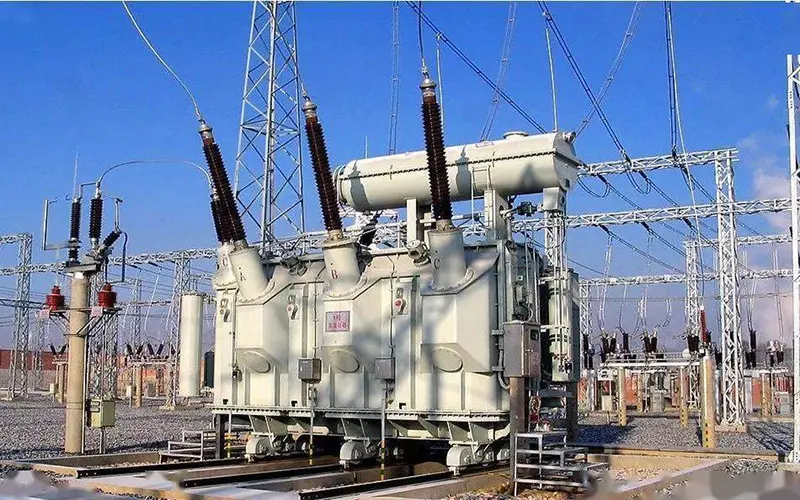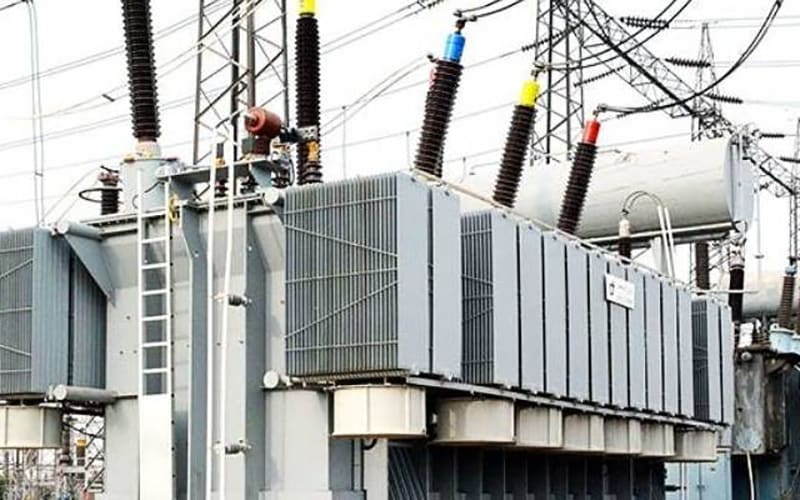Transformer installation
- The installation of transformers and substations shall comply with the following regulations:
1.1 Before installing transformers and substations, the decoration surfaces of indoor ceilings and walls shall be completed without water leakage, the leveling layer of the ground shall be completed, the foundation shall be inspected and qualified, and the conduits buried in the foundation and the reserved holes for transformer inlet and outlet lines and related embedded parts shall be inspected and qualified;
1.2 Before the transformers and substations are powered on, the handover test of the transformer and system grounding shall be qualified. - The transformer shall be installed in the correct position, with complete accessories, the oil level of the oil-immersed transformer shall be normal, and there shall be no oil leakage.
- The grounding connection method and grounding resistance value of the neutral point of the transformer shall meet the design requirements.
- The transformer box, the bracket, the foundation steel, and the shell of the dry-type transformer shall be reliably connected to the protective conductor separately, and the fasteners and anti-loosening parts shall be complete.
- Transformers and high-voltage electrical equipment shall be put into use only after the handover test is completed and qualified.
- The fence gates of the power distribution room and the static compensation device should be reliably connected to the protective conductor with a copper core soft wire, and its cross-sectional area should not be less than 4mm2.
- The transmission part of the on-load voltage regulator should be well lubricated, the action should be flexible, the inching given position should be consistent with the actual position of the switch, and the automatic adjustment should meet the technical document requirements of the product.
- The insulation parts should be free of defects such as cracks, defects, and porcelain parts, as well as porcelain damage. The surface should be clean, and the temperature measuring instrument should indicate accurately.
- For transformers with protection level requirements, when opening holes on the high-voltage or low-voltage and other insulation cover plates, the protection level requirements of the transformer should be met.
Installation of power distribution cabinet and control cabinet
- The installation of complete sets of distribution cabinets, control cabinets (tables, boxes), and distribution boxes (panels) shall comply with the following regulations:
1.1 Before installing complete sets of distribution cabinets (tables) and control cabinets, the decoration of indoor ceilings and walls shall be completed, without water leakage, the leveling layer of indoor floors shall be completed, the foundation steel and the cable trench under the cabinets, tables and boxes shall be inspected and qualified, and the foundation of floor-standing cabinets, tables and boxes and the conduits buried in the foundation shall be inspected and qualified;
1.2 Before installing the distribution box (panel) on the wall, the indoor ceiling, walls, and decorative surfaces shall be completed, and the reserved holes of the concealed control (distribution) box and the wire boxes and conduits for power and lighting wiring shall be inspected and qualified;
1.3 Before connecting the power line, it should be confirmed that the model and performance parameters of the surge protector (SPD) meet the design requirements and that the grounding wire and PE row are reliably connected;
1.4 Before the trial operation, the PE row in the cabinet, table, box, and panel should be connected, the specifications and models of the components in the cabinet, table, box, and panel should meet the design requirements, the wiring should be correct and the handover test should be qualified.
1.5 The layout and safety spacing of the distribution cabinet, table, box and panel should meet the design requirements.
1.6 The distribution cabinet, table, and box should be connected with each other or with the foundation steel with galvanized bolts, and the anti-loose parts should be complete; when the design has fire protection requirements, the inlet and outlet of the cabinet, table, and box should be fireproof and sealed tightly.
1.7 The wiring between the distribution cabinet, table, box, and panel should comply with the following regulations:
1) The secondary circuit wiring should meet the design requirements. Except for the electronic component circuit or similar circuit, the rated voltage of the insulated wire of the circuit should not be less than 450/750V; for the conductor cross-sectional area of the copper core insulated wire or cable, the current circuit should not be less than 2.5 mm2, and other circuits should not be less than 1.5 mm2.
2) The secondary circuit connection should be bundled and tied, and different voltage levels, AC, DC lines, and computer control lines should be tied separately and marked; after fixing, it should not hinder the pulling out or pushing in of the trolley switch or withdrawable components.
3) The bending radius of the cable should not be less than the allowable bending radius of the cable.
4) The wire connection should not damage the wire core. - The installation of lighting distribution boxes (panels) shall comply with the following regulations:
2.1 The opening of the box should be compatible with the diameter of the conduit, the cover of the concealed distribution box should be close to the wall, and the coating of the box (panel) should be complete;
2.2 The circuit numbers in the box (panel) should be complete and the markings should be correct;
2.3 The box (panel) should be made of non-combustible materials.
2.4 The box (panel) should be installed firmly, correctly positioned, and complete in components. The installation height should meet the design and maintenance requirements.
2.5 The wiring in the box (panel) should be neat and free of twisting; the wire connection should be tight, without damaging the wire core and without breaking the strands. The cross-sectional area of the wire pressed on both sides of the screw under the washer should be the same. The wire connection on the same electrical device terminal should not exceed 2 wires, and the anti-loosening washers and other parts should be complete;
2.6 The switch action in the box (panel) should be flexible and reliable;
2.7 The neutral conductor (N) and protective grounding conductor (PE) busbars should be set separately in the box (panel), and the same terminal on the busbar should not be connected to the N or PE of different circuits. - The installation of surge protectors (SPDs) in cabinets, boxes, and panels should comply with the following regulations:
3.1 The model specifications and installation layout of SPDs should meet the design requirements;
3.2 The wiring form of SPDs should meet the design requirements, and the location of the grounding wire should not be close to the outlet position;
3.3 The connecting wire of SPD should be straight, short enough, and should not be greater than 0.5m. - The metal frames and foundation steel of distribution cabinets, tables, and boxes should be reliably connected to the protective conductor; for openable doors equipped with electrical appliances, the grounding terminals of the doors and metal frames should be connected with yellow-green insulated copper core soft wires with a cross-sectional area of not less than 4m2, and should be marked.
- Distribution cabinets, tables, boxes, panels, and other distribution devices should have reliable protection against electric shock; the protective grounding conductor (PE) row in the device should have exposed terminals for connecting external protective grounding conductors and should be reliably connected. When the design does not require it, the minimum cross-sectional area of the connecting conductor should comply with the provisions of the current national standard “Low Voltage Distribution Design Code” GB 50054.
- The push and pull of trolleys and drawer-type complete distribution cabinets should be flexible, without jamming and collision. The center lines of the moving contacts and static contacts should be consistent, and the contact contact should be tight. When put in, the grounding contact should be in contact before the main contact; when withdrawn, the grounding contact should be disengaged after the main contact.
Equipment installation location requirements
- Transformer rooms, capacitor rooms, distribution device rooms, and control rooms should not have irrelevant pipes passing through them.
- High and low-voltage distribution rooms, transformer rooms, capacitor rooms, and control rooms should not have irrelevant pipes and lines passing through them.
- Distribution cabinets, tables, boxes, and trays should be installed firmly and should not be placed directly under water pipes.
- Transformer rooms, distribution rooms, etc. should be equipped with facilities to prevent rain, snow, and small animals from entering the room through skylights, ventilation windows, doors, cable trenches, etc.
- Lamps should not be placed directly above transformers, distribution devices, and bare conductors.
